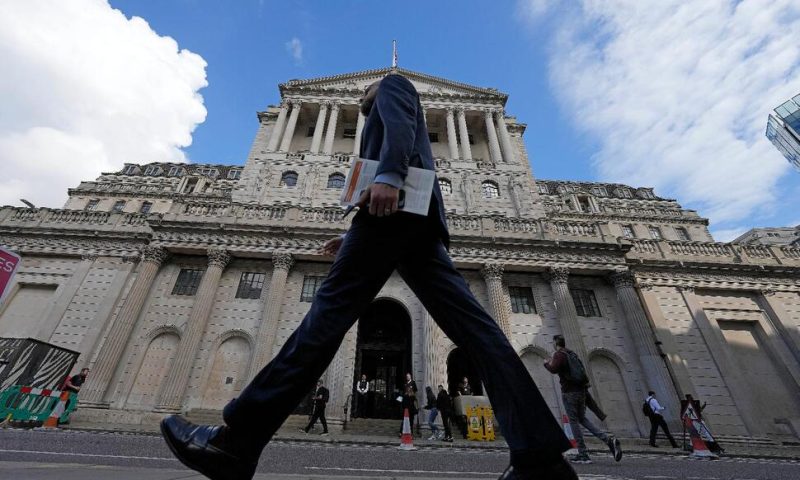Official figures show that consumer price inflation in the U.K. is unchanged at 8.7% in the year to May against expectations of a modest decline
LONDON — U.K. borrowers will be bracing themselves for further increases in lending costs after official figures Wednesday showed inflation failing to fall as anticipated in May.
The Office for National Statistics said inflation, as measured by the consumer price index, held steady at 8.7% in the year to May against expectations for a decline to 8.4%, a development that is likely to see the independent Bank of England raise the cost of borrowing again on Thursday.
The agency said rising prices for flights, recreational and cultural goods and services, and second-hand cars boosted inflation, while gas prices provided the biggest downward pressure. There is clear evidence within the figures that high inflation is not just a factor of external factors, such as through high food and energy prices, but has become embedded in the U.K. economy through such higher wages, for example.
Inflation in the U.K. is proving stickier than elsewhere in the Group of Seven industrialized nations, with many blaming the bank for being too slow in starting to raise interest rates and Britain’s departure from the European Union, which has added to costs. Inflation in the U.S. is down at 4% and is 6.1% across the 20 EU countries that use the euro currency.
Financial markets think the bank will increase its benchmark interest rate on Thursday from the 15-year high of 4.5% by at least a quarter point to 4.75%.
Some economists think the bank, which is tasked with keeping inflation at around 2%, may opt to raise its benchmark rate to 5%. And the markets now think it’s a possibility that rates could end the year as high as 6%, a level last reached in 2000.
Higher interest rates help lower inflation by making it more expensive for households and businesses to borrow, meaning they potentially spend less, thereby reducing demand pressure on prices.
“This makes a rate rise by the Bank of England this week near certain and materially increases the likelihood of further rises well into autumn,” said Debapratim De, senior economist at Deloitte.
The Conservative government, which is trailing the main opposition Labour Party in opinion polls ahead of a likely general election next year, insists that getting inflation under control is the number one economic priority.
“We know how much high inflation hurts families and businesses across the country, and our plan to halve the rate this year is the best way we can keep costs and interest rates down,” Treasury chief Jeremy Hunt said.
“We will not hesitate in our resolve to support the Bank of England as it seeks to squeeze inflation out of our economy, while also providing targeted support with the cost of living,” he added.
Many homeowners will be cushioned from recent increases as they fixed their mortgages when interest rates were ultra low during the coronavirus pandemic. However, those whose fixed-rate terms expire over the coming months will face much higher borrowing rates when they look to lock in new deals.
“It’s a ticking time bomb as 1.4 million borrowers will see an end to their low fixed rates this year,” said Jamie Elvin, director at mortgage broker Strive Mortgages.
Unlike the U.S., where many homeowners fix their mortgage rates for 30 years, the prevailing habit in the U.K. is for homeowners to fix a rate for much shorter periods of time, after which they move to their lender’s usually higher variable rate or seek out other deals. In the current climate, for example, those who fixed their mortgage rate at below 1% three years ago may see a fivefold increase in their rates.
Like other central banks, the Bank of England has aggressively raised borrowing rates over the past 18 months or so after inflation spiked sharply, first because of bottlenecks caused by the coronavirus pandemic and then because of Russia’s invasion of Ukraine, which sent energy and food prices surging.

